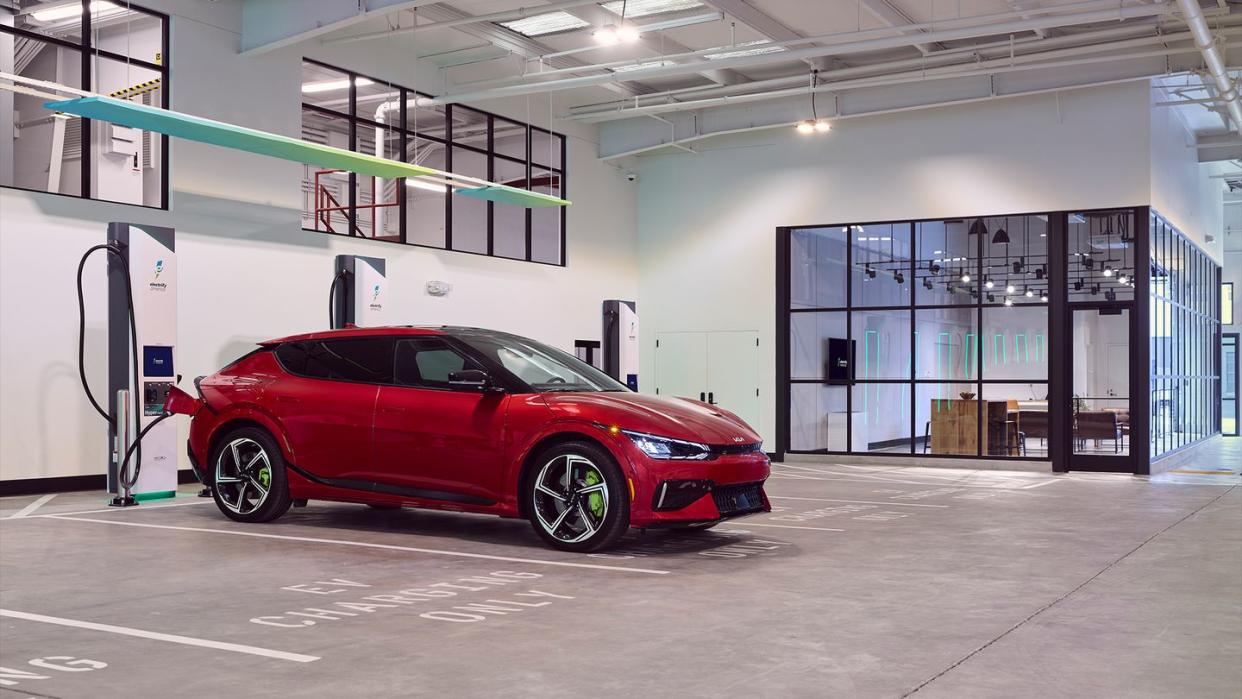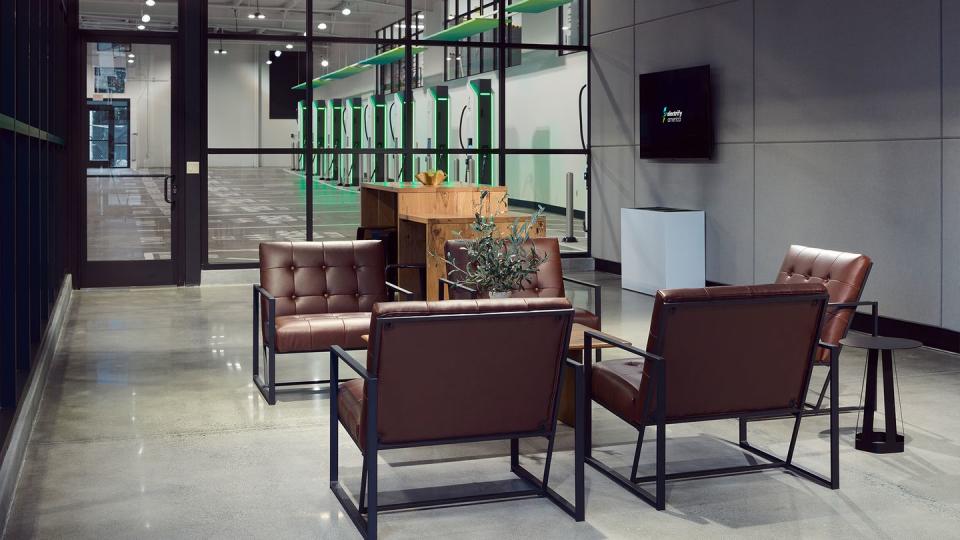Here’s What Electrify America Plans for Charging in 2024

Electrify America reveals plans to reach the 5000-charger mark by the end of 2024, amid efforts to integrate Tesla's North American Charging Standard (NACS) and open new station types.
EA has recently opened an indoor charging hub in San Francisco near the Bay Bridge, featuring a lounge with food and drink.
The network is also working on updating underperforming, older chargers, with the aim of increasing charger uptime and convenience.
This week marked the sixth anniversary of the first EV charger installed by Electrify America, a company that VW was required to launch as penance for the diesel crisis. In the past six years EA stations have seen significant growth in the US and Canada, as well as more than a few challenges experienced in the industry, including issues with charger uptime and reliability.
We're still in the early era of EV network construction in this country. But the worst days are perhaps largely behind us, as charging networks continue to adapt to the evolving realities of an EV landscape, with some lessons having been learned the hard way.
In 2023 EA grew its footprint to over 900 stations in 47 states, the District of Columbia, as well as six Canadian provinces, representing over 4000 individual chargers. When it comes to firsts, North Dakota and Hawaii received their first EA stations, with the network also updating some 680 underperforming legacy chargers to a newer charger model.
What does EA have in the works for 2024?
By the end of the year EA plans to reach the 5000-charger mark, while also working to expand its plug-and-charge technology that has been one of the main convenience features of Tesla's Supercharger network.
You simply pull up to a station, insert a cable into the charging port, and that's it—you don't have to worry about payment or apps, as the charger recognizes the car and its owner automatically.
The concept and the tech to make this happen have been around for years, but it hasn't been far from easy for some networks to implement.

Earlier this year EA also opened an entirely new type of station: an indoor one in San Francisco that had been built inside a former bus depot. This unique station features 20 Hyper-Fast chargers with up to 350 kW peak power for each.
The hub has been designed to be more akin to an airline lounge, with complimentary high-speed Wi-Fi, food, beverage choices, and restrooms.
In the first 30 days of operation, the 928 Harrison Street station provided over 8000 charging sessions, delivering over 290,000 kWh and nearly 1 million electric miles of range, saving some 40,000 gallons of gas in the process.
"Focusing on the customer experience, our large station in an urban area reinforces our commitment to making EVs more accessible," EA noted.
Just a few blocks from the Bay Bridge, the station has 24/7 access with security, as well as two climate-controlled lounge areas.
Just like plug-and-charge tech, stations with their own indoor amenities seem like a logical item that should have appeared a decade ago, but are only now starting to see limited roll-outs in some high-traffic areas.
The model of an urban charging hub with amenities has yet to go wide in the US, but perhaps it's not too early to call this station a success. In Europe, Audi and Porsche have been experimenting with charging lounges of this type and plan to build more, including outside Europe.
Another big change in the works is the addition of Tesla's North American Charging Standard (NACS) connectors to EA stations by 2025.
"Electrify America will continue to provide the Combined Charging System (CCS-1) connector throughout its network as it transitions to also support automakers adding NACS charging ports," the company adds.
This means EA stations will soon feature both NACS and CCS cables, kicking off a transition period of sorts. But whether CCS will ever disappear remains to be seen.
For now, it appears many EV owners will be rolling with NACS or CCS adapters in their trunks over the next few years.
Will the increased availability of indoor charging hubs motivate more people to buy EVs, or are other factors more important, like EV price and range? Let us know in the comments below how these priorities might rank.

